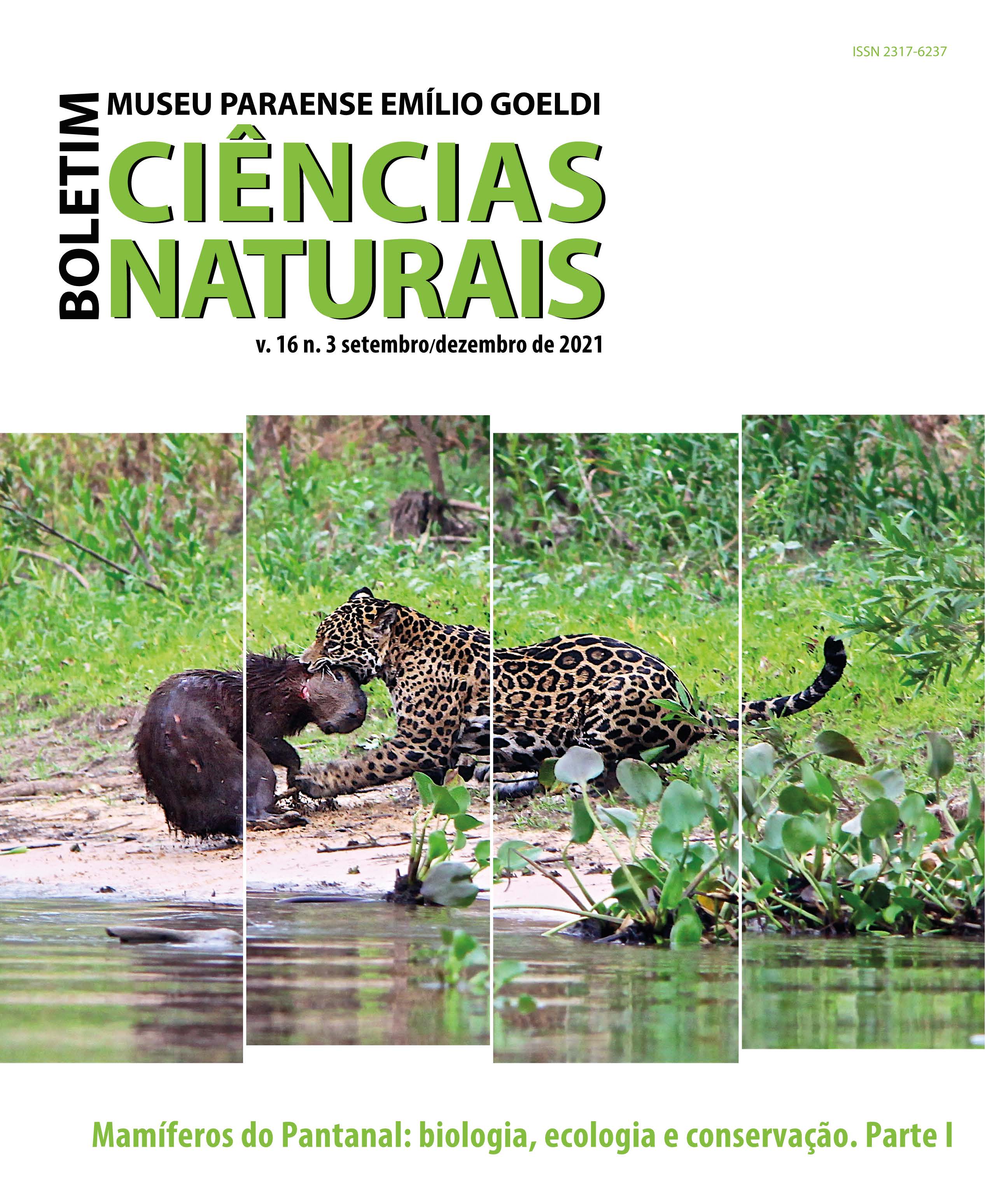Marsupials of Upper Paraguay Basin: a review of the knowledge from the plateau to the Pantanal Wetland
DOI:
https://doi.org/10.46357/bcnaturais.v16i3.813Keywords:
Ecology, Natural history, Morphology, Didelphidae, Didelphimorphia, Pantanal WetlandAbstract
The order Didelphimorphia is composed only by the family Didelphidae, exclusive to the American continent. This family is widely distributed in the Neotropical region, inhabiting many habitats. Literature records 68 species of didelphids in Brazil, of which 24 have been confirmed to occur in the Upper Paraguay Basin (BAP). The species present in this region belong to three subfamilies - Glironiinae (1 genus, 1 species), Caluromyinae (1, 2), and Didelphinae (11, 21). The recently described Monodelphis saci is included among them, as well as three others recently validated at the species level: Gracilinanus peruanus, Philander canus and Marmosa rapposa, and two endangered species, Thylamys karimii, and T. macrurus. The purpose of this article was to survey all marsupial species recorded in the BAP to date, bringing a summarized morphological description of each of the 24 species, a comparison with congeneric or similar species, a review of ecology and natural history data, and specific information on their populations and their level of threat, according to data availability. Finally, this study provides unprecedented information, which can be used for decision-making in public policies and guide basic research for this zoological group in this region that is so poorly known and highly threatened.
Downloads
Published
Issue
Section
License
Publication means fully assigning and transferring all copyrights of the manuscript to the journal. The Liability Statement and
Assignment of Copyrights will be enclosed with the notice of acceptance. All the authors must sign the document and return it to the journal.








